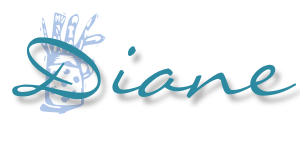
I thought I would post some pictures of some cards I made a couple of years ago, but as they primarily use papers for the technique, I thought they would be useful. Some of the cards do have a little stamping on them but the cards could easily be recreated without.
 Essentially the technique involves non-colourfast papers. By applying water to the paper the dye can be transferred to another card. Tissue paper and crepe paper are best for this technique but it could be tried with other papers
Essentially the technique involves non-colourfast papers. By applying water to the paper the dye can be transferred to another card. Tissue paper and crepe paper are best for this technique but it could be tried with other papers

Creating backgrounds is the easiest method to try first. Wet a fairly sturdy piece of
cardstock with a paint brush and water, then lay strips of tissue to create scenery or try using scrunched up scraps and overlaying and dabbing to create different effects. It's worth
practicing on a scrap of card first to judge how much water is needed and how intense the colour is. Both techniques require enough moisture to make the dye bleed out,
but don't forget, when paper or card is damp it warps, so its worth allowing a bit of time for the dyed base card to be allowed to dry, then flattened under some heavy books before you continue to work on itShapes can be slightly fiddly and complicated to do, I normally lightly moisten the shape in the centre, position it on the base, then carefully with a wet brush(don't over wet the brush, the colour may bleed out from the edges, and although this can look effective it may not be the look you are after) paint over the shape working carefully to the edges. Either leave the shapes in place to dry or when the desired effect/colour is achieved peel the shapes off. Shapes can also be dyed separately then cut out to create embellishments
Mask off areas or work over a stencil to create dyed areas
And this is how i discovered paper dyeing......
I hadn't got any suitable backing paper for this picture so after several disappointing stamping and painting efforts I decided to stick on tissue paper circles...trouble was, it wasn't colour fast and the glue made the dye bleed...but I liked the natural light and shade the circles were creating so I started again but this time just sticking them down with water. Once they were dry I lifted them off...hey presto... spotty paper!!
This precious scrapbook page is of my husband (much younger!!!)and my daughter Gina, on the very first Red Nose Day. Gina was so excited , but the trouble was her own nose was a bit too small to keep the plastic one on, so she spent the whole time with it balanced on top of her nose and her head tipped back. She loved red nose day and collected a nose every year until the year she died....she thought they would become collectors items and said when she was old she would auction them off for charity...perhaps one day I will be able to grant her wish...I know they are still amongst her treasures.
So don't forget when unwrapping your pressies on Christmas Day, grab any coloured tissue, doesn't matter if it's crumpled..... and fingers crossed it's not colour-fast!!

 This is the valentine card I have made for my lovely hubbie, he hates soppy, cutesy images so it's quite hard sometimes to come up with something romantic, I thought this had quite an industrial look. It's made completely out of recycled packaging and card. The paper sticking out near the bottom is a recycled illustration from a damaged children's book. I used the image to inspire the doodles on the card. The key is from and old chest of drawers... I think!?! (we keep a pot with old keys, not sure why, they never fit anything!! but at least they're useful as embellishments). The wire is left over from a picture hanging kit. The message was printed on the computer.
This is the valentine card I have made for my lovely hubbie, he hates soppy, cutesy images so it's quite hard sometimes to come up with something romantic, I thought this had quite an industrial look. It's made completely out of recycled packaging and card. The paper sticking out near the bottom is a recycled illustration from a damaged children's book. I used the image to inspire the doodles on the card. The key is from and old chest of drawers... I think!?! (we keep a pot with old keys, not sure why, they never fit anything!! but at least they're useful as embellishments). The wire is left over from a picture hanging kit. The message was printed on the computer. 








 I thought I would post some pictures of some cards I made a couple of years ago, but as they primarily use papers for the technique, I thought they would be useful. Some of the cards do have a little stamping on them but the cards could easily be recreated without.
I thought I would post some pictures of some cards I made a couple of years ago, but as they primarily use papers for the technique, I thought they would be useful. Some of the cards do have a little stamping on them but the cards could easily be recreated without.
 Creating backgrounds is the easiest method to try first. Wet a fairly sturdy piece of
Creating backgrounds is the easiest method to try first. Wet a fairly sturdy piece of 













